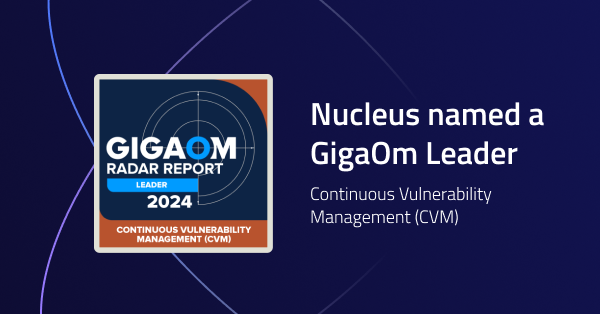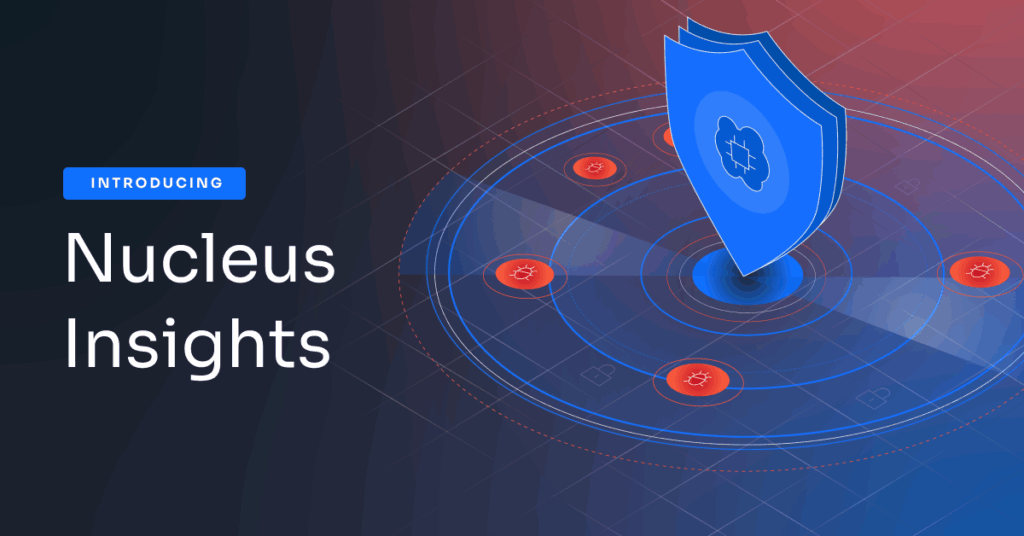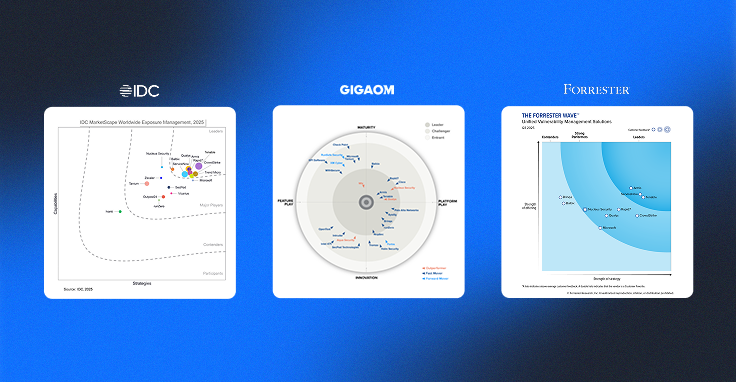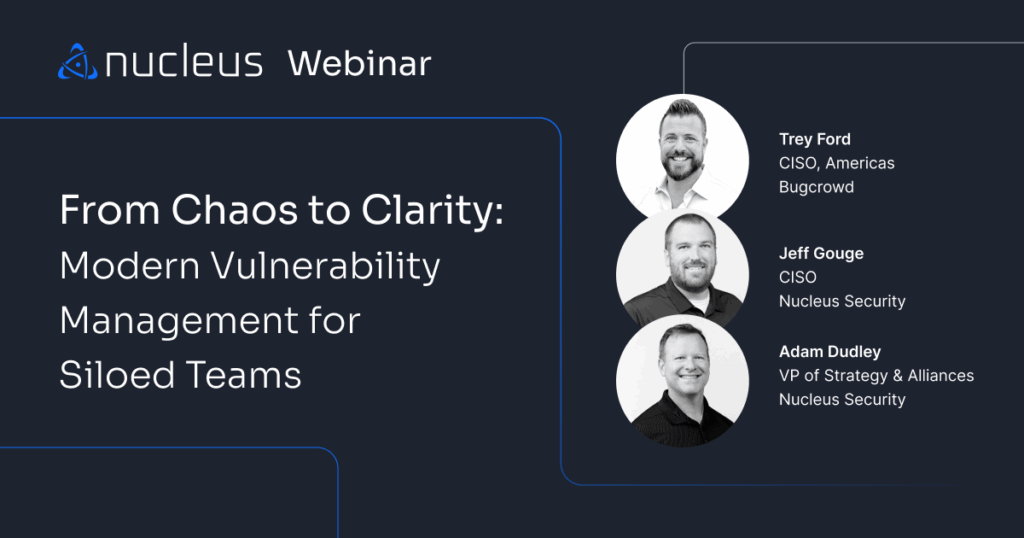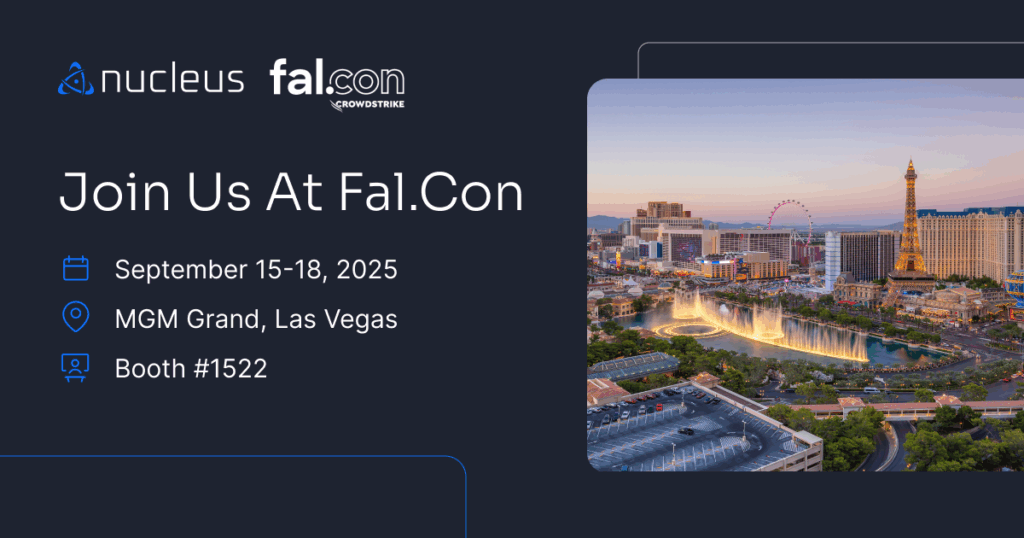Week of October 2, 2023 CISA KEV Breakdown
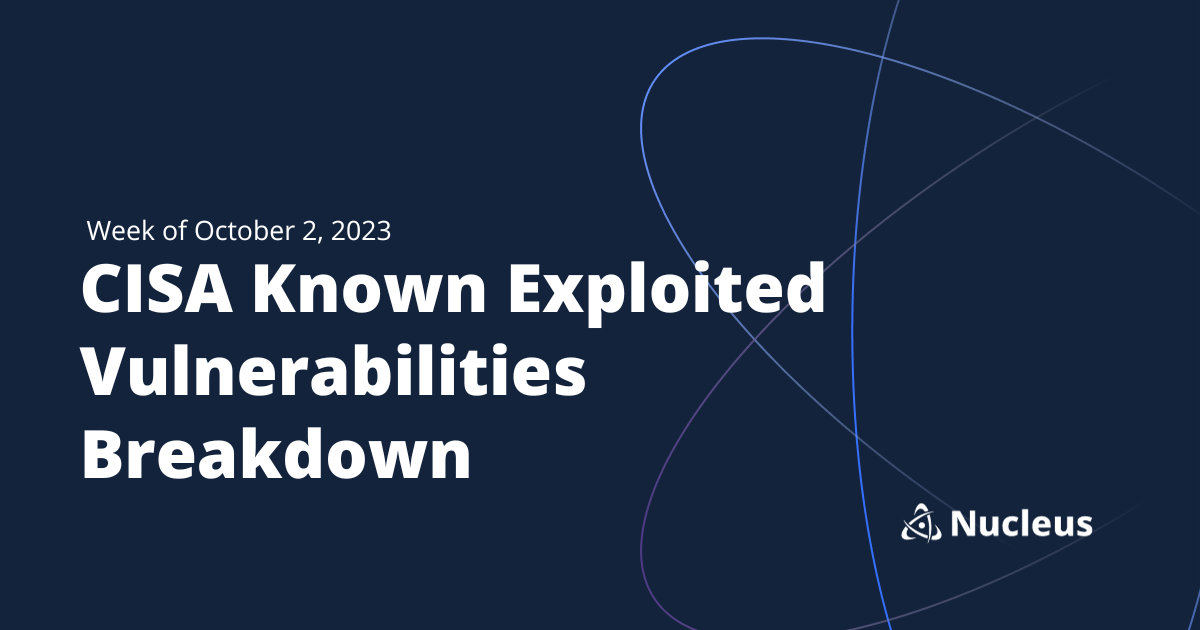
Week of October 2: 7 New Vulns | Google, Arm, Microsoft, JetBrains, Apple, Atlassian, Progress
In this CISA KEV Breakdown, we cover the additions of the week of October 2. Be sure to also check out the separate Breakdown post for October 2 where we discuss the libvpx vulnerability, CVE-2023-5217 as well as WS_FTP exploitation. In this post, we follow the rest of the additions from the week to the KEV. This week brings multiple zero-days in major vendors such as Apple and Atlassian, CI/CD takeover and the first of a two-part chain exploit in the Windows CNG Key Isolation Service. Nucleus Security is aware that CVE-2023-28229 is commonly paired with CVE-2023-36906 and expect CISA will add this second vulnerability to the KEV once they receive evidence of both vulnerabilities exploited together. In the time since the October 2 post was released, GreyNoise has released tags for both WS_FTP scanning and WS_FTP exploitation activity.
[wptb id=22591]Notable Vulnerability Additions
CVE-2023-4211 | Mali GPU Kernel Use After Free
Uncovered as a zero-day that was exploited in the wild by Maddie Stone and Jann Horn of Google’s Threat Analysis Group (TAG), a local unauthenticated attacker can trigger improper GPU memory processing operations to gain access to freed memory. According to the advisory, the issue was resolved in Bifrost, Valhall and Arm 5th Gen GPU Architecture Kernel Driver r43p0. The Mali GPU is typically found within Android devices, and was addressed by Google in the October 2023 Android update.
There does not appear to be other publicy known information on what exploitation activity occurred, and it is suggested by both ARM and Google as being limited and targeted. It’s important to note that this exploit would require local access to the device, and the long tail of an exploit like this is reduced when identified internally by an extrernal party such as TAG. However, don’t hesitate to update! This is especially true for those users who choose Android and could be considered high-risk of becoming victim to attempted exploitation. You can read more about security for the high-risk user from Citizen Lab here.
Security Advisory(s):
https://developer.arm.com/Arm%20Security%20Center/Mali%20GPU%20Driver%20Vulnerabilities
CVE-2023-28229 | Windows CNG Key Isolation Service Privilege Escalation
An escalation of privilege vulnerability in the CNG Key Isolation Service in Windows 10/11 and several versions of Windows Server 2008, 2012, 2016 and 2019 can allow a local, authenticated attacker to bypass security measures in the Isolation service to cause sandbox escape alongside CVE-2023-36906. Uncovered by researcher @k0shl, they introduced a blog on August 31 discussing the escape in great detail as well as RCA of the issues in both vulnerabilities. For complete sandbox escape, the information disclosure provided by CVE-2023-36906 is required. You can read more of k0shl’s writeup here.
At this point, multiple proof of concepts exist on the internet publicly, however existing information on how the vulnerability was exploited does not appear public at this time. It’s certainly possible we will be seeing CVE-2023-36906 added to the KEV if evidence reveals both vulnerabilities were used in the observed exploitation or in future exploitation by CISA. A patch for CVE-2023-36906 was released on August 8th.
Security Advisory(s):
https://msrc.microsoft.com/update-guide/vulnerability/CVE-2023-28229
CVE-2023-42793 | TeamCity Remote Code Execution
An authentication bypass vulnerability that can lead to remote code execution was found in JetBrains TeamCity On-Premises before 2023.05.4. An attacker would be able to exploit this vulnerability remotely and without the need for any authentication. Multiple exploits exist publicly for the vulnerability including a Metasploit module. The vulnerability was originally discovered by Sonar and you can view their report from Stefan Schiller here. Rapid7 published an extensive report on September 27th for the patch diff which you can view here. You can also check out the dedicated blog by the JetBrains team themselves on the vulnerability here. The CI/CD tool enabled the possibility for remote code execution due to a domino effect. The allowance of bypassing authentication mechanisms with a specific request along with the hard-coded assumption that a user with ID 1 is an administrative user allowed for the creation of an authentication token with administrator privileges.
This is primarily where the assumption in remote code execution occurs, in that the attacker now has unfettered access to the TeamCity environment with an administrator token. The RCE capabilities appear to come from an undocumented debug API endpoint called /app/rest/debug/processes. Once an attacker establishes administrator access to the tool through the specified request, they can enable this debug endpoing via the configuration to enable remote code execution on the vulnerable system. Sonar reported at the time of publishing their post that over 3,000 instances of TeamCity On-Premises were exposed on the internet. The creation of a token with the name RPC2 in your instance is a possible indicator of compromise, but it’s important to note the attacker can remove this to cover their tracks more effectively. Traffic logs are critical in this scenario to understanding what all an attacker may accomplish once establishing themselves in the tool. Florian Roth introduced a yara rule you can use to inspect logs for signs of possible exploitation. GreyNoise has launched a Tag for this vulnerability which you can view here.
Security Advisory(s):
CVE-2023-22515 | Confluence DC & Server Privilege Escalation
A zero-day uncovered in Confluence Data Center & Server after version 8.0.0 could allow a remote attacker to create unauthorized Confluence Administrator accounts to access instances. Atlassian confirmed exploitation activity across multiple customers in their advisory posted October 4, and although it was identified as a privilege escalation vulnerability, was listed as critical by the vendor. The vulnerability has since been changed to be considered a broken access control flaw. Threat intelligence sources observed exploitation of the vulnerability as early as mid-september of this year. Rapid7 released an update to their blog on the CVE with indication that the scope for the issue is wider than projected by the Atlassian advisory. Alongside the potential for exploitation within the /setup/* endpoints, it was discovered by Rapid7 that other avenues, such as /server-info.action were found to be able to leverage the exploit. It is warned by several researchers that this vulnerability is trivial to exploit and should be treated with a sense of urgency if you are affected.
Atlassian recommends from their advisory to check for the following indicators of compromise:
- Unexpected members of the confluence-administrator group
- Unexpected newly created user accounts
- Requests to /setup/*.action in network access logs
- Presence of /setup/setupadministrator.action in an exception message in atlassian-confluence-security.log in the Confluence home directory
The following versions are specifically affected:
- 8.0.0
- 8.0.1
- 8.0.2
- 8.0.3
- 8.0.4
- 8.1.0
- 8.1.1
- 8.1.3
- 8.1.4
- 8.2.0
- 8.2.1
- 8.2.2
- 8.2.3
- 8.3.0
- 8.3.1
- 8.3.2
- 8.4.0
- 8.4.1
- 8.4.2
- 8.5.0
- 8.5.1
Due to the fact that this is an on-prem vulnerability and Atlassian Cloud sites are not affected, it is strongly urged that all on-prem Confluence users patch the vulnerability immediately or ensure proper compensating controls are in-place until a patch is possible. It’s important to note that when a vulnerability like this comes along, the patch doesn’t solve for all issues both non-exploited and exploited. If your Confluence instance has been affected, it is critical to identify all possible avenues in which an attacker could maintain persistence and remove them manually. Atlassian also recommends simply blocking traffic to the /setup/* endpoint, however it is clear other avenues such as what is mentioned above are possible, and could lead to a game of whack-a-mole.
Security Advisory(s):
CVE-2023-42824| iOS & iPadOS Privilege Escalation
A kernel vulnerability before iOS and iPadOS 17.0.3 could allow a local attacker to escalate privileges. Apple specified in their advisory that they were made aware of exploitation activity specifically against versions of iOS before 16.6. Covered in our September 22 Breakdown post, CVE-2023-41992 was also disclosed as a kernel escalation of privilege vulnerability, but with little detail released by Apple and no further public information on exploitation of either vulnerability, it is not clear if CVE-2023-42824 is a patch bypass of CVE-2023-41992. At time of writing, no public information appears to be available on how the vulnerability is exploited, or what evidence exists of in-the-wild exploitation.
Security Advisory(s):
https://support.apple.com/en-us/HT213961
← October 2, 2023 CISA Kev Breakdown
Click here to expand our CISA KEV Breakdown Frequently Asked Questions
- What makes for a notable addition?
- A notable addition can arise from many different characteristics. If a particular vulnerability is notable to the security community or a subset of the security community or if the EPSS score reveals notable information about the vulnerability, this can constitute further analysis. It may also be the case that a particular vulnerability shines a light on everyday users and we will highlight important information and key takeaways to ensure users and readers have easy access to actionable information.
- When is the Breakdown released?
- We aim to have our analysis of each KEV update posted within 24 hours of the time in which the Catalog is updated. See CISA’s full catalog here
- I am not bound by BOD 22-01 or federal regulations, why should the KEV concern me?
- CISA encourages all organizations to utilize the Catalog as an attribute in your vulnerability prioritization framework. Organizations looking to lessen the scope on known dangerous vulnerabilities and make a goal to remediate them can understand where they currently stand against what CISA has confirmed as exploited vulnerabilities in the wild. See CISA’s section on “How should organizations use the KEV catalog?” here.
- What is EPSS?
- EPSS is the Exploit Prediction Scoring System. It is an open, data-driven effort for estimating the likelihood (probability) that a software vulnerability will be exploited in the wild. See the EPSS home page on FIRST for more information here.
- What is the difference between EPSS probability and EPSS percent?
- EPSS probability is the risk calculated by the model when determining the perceived threat of the vulnerability itself. Percentage is a relative comparison of the rest of the CVEs within the given sample. While the probability only changes upon refreshing the results from the model, the percentage can change purely based on the CVE sample given. In the case of the Breakdown, we use the percentage given by the pool of all CVEs with given EPSS data. Scores may vary post-release of the post given new information about the vulnerabilities and their perceived threat. For more information on applying and understanding EPSS data, see this article on the FIRST website, as well as their FAQ page.
- What is GreyNoise?
- GreyNoise is a platform that collects, analyzes, and labels data on IPs that scan the internet and saturate security tools with noise. Through their sensor network, GreyNoise observes vulnerability exploitation attempts for vulnerabilities that are exploited in the wild over the Internet. These are arguably vulnerabilities that should be at the very top of your priority list to remediate.
- Why are GreyNoise exploitation attempts only observed on ~20% of KEV vulnerabilities?
- Exploitation of many vulnerabilities in the CISA KEV will not be observed for many reasons that GreyNoise does a good job of explaining in this post. For example:
- The vulnerability may not be remotely exploitable
- Vulnerability exploitation may require authentication (and result in privilege escalation)
- The impacted software may not be exposed to the internet
- Mass scanning/exploitation is not occurring yet
- Exploitation of many vulnerabilities in the CISA KEV will not be observed for many reasons that GreyNoise does a good job of explaining in this post. For example:
See Nucleus in Action
Discover how unified, risk-based automation can transform your vulnerability management.






